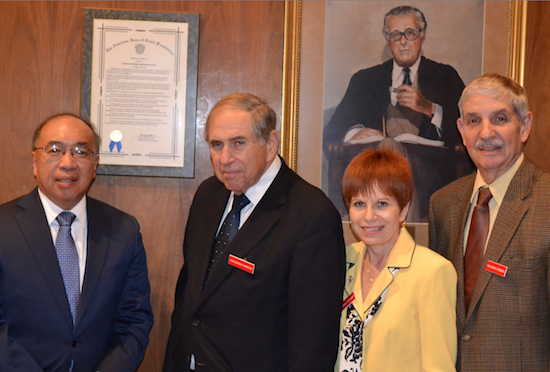Brooklyn Judge dedicates plaque for and becomes honorary member of the Inn of Court

On Tuesday, a permanent plaque was dedicated to Hon. Nathan R. Sobel and the Kings County American Inn of Court in the Brooklyn Bar Association building at 123 Remsen Street, and Hon. Randall T. Eng was named as a honorary member of the foundation.
“Judge Eng dedicated a plaque which signified the founding of this Inn, which is named for Judge Nathan R. Sobel,” Hon. Barry Kamins said. “So the plaque is now up on the wall, and it tells the world that this Inn was named for Nathan R. Sobel, and tells little about him.”
Kamins also explained that despite the fact that Eng is not technically a member of The Inn of Court, the local chapter considers him one and felt that the honorary title was fitting.

Brooklyn Boro
View MoreNew York City’s most populous borough, Brooklyn, is home to nearly 2.6 million residents. If Brooklyn were an independent city it would be the fourth largest city in the United States. While Brooklyn has become the epitome of ‘cool and hip’ in recent years, for those that were born here, raised families here and improved communities over the years, Brooklyn has never been ‘uncool’.